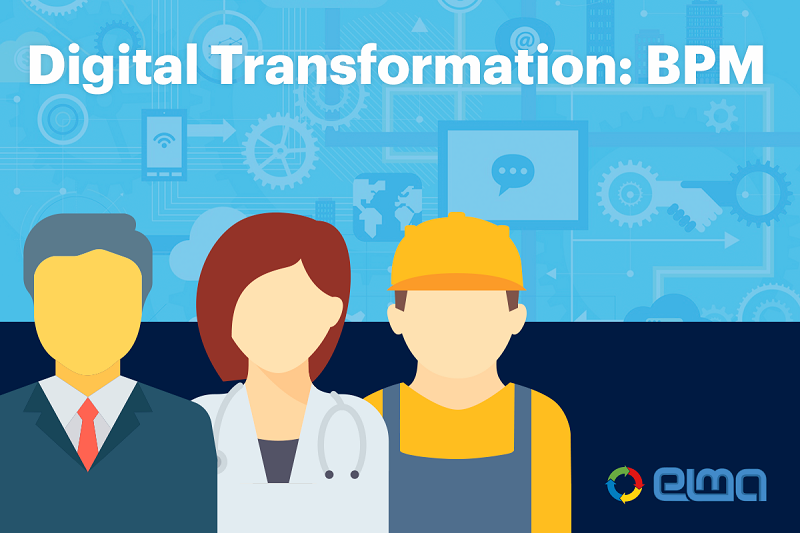Digital Transformation: Digitization of Business Processes
Blog: Elma Blog

Digitization has become an integral part of today’s society. People love all things digital, and as customers hope for the same approach from businesses. They want to interact with banks, insurance companies, mobile providers and town administrations through PCs and mobile devices, expecting a seamless user experience.
There is no turning back, the digital transformation of your business is necessary to keep up with the modern world.
What do I mean by digital transformation of your business? I’m not talking about simply developing an app and submitting it to The App Store. Digital transformation is much more complex and requires you to take a completely different approach to business processes of your organization.
Business processes are the essence of a company; they drive the business and assure that everything works as required, providing good results, products and services. Applying digital technology to your business processes is a step that can help you reach your goals faster and achieve a much higher performance than you could have thought. BPM can benefit greatly from digitization, so even if you still have not started the BPM initiative in your company, now is the right time to do that, and engage in digital transformation.
So how is it done? Of course, the first thing that comes to mind is automation. If your processes are not automated, there is nothing digital about them. Automation requires you to use certain software for handling your strategic and everyday processes. Reducing the number of paper-based inputs, manual work, and human errors is an important part.
However, the digital transformation does not stop at mere automation. When digitizing a process, it is necessary to not simply automate the existing workflow but to try to make it better. Analyze the process; see what steps you can cut and what documents might be excessive. Improvement is an integral part of the digital transformation, so focus on optimizing your process and its components. To do so, you need to understand the rules, inputs, and outputs of a process, so dedicate time to thorough analysis. Examine all the information and decide which processes you want to automate. Create a center of excellence; choose a team of dedicated and qualified experts that will be in charge of digital transformation in your company.
Since BPM involves document management, performance evaluation, customer relations and more, digitization in this area can help organize interactions with your customers, internal operations, all sorts of document approvals, content management, HR, accounting processes and other.
A property development company implemented a BPMS to manage all their deals; information about a property unit, customer inquiries and reservations are stored in one place, accessible to all the people working with it. This greatly facilitates work with customers, keeps documentation in order and allows the company to collect and analyze data for further development.
A bank automated such popular operations as loan services, credit cards, and cash and non-cash transactions. The economic effect was significant, because the services became more accessible to the customer, and the time that a customer waits for a service has been minimized.
A power device manufacturer acquired a digital information space where production, procurement, sales and logistic departments interact and handle all the data. They always know when exactly an order will be manufactured, what the amount of unfinished product is and what the current KPI values are. Monitoring and improvement have never been easier!
These are just some examples; everything depends on the specifics of your business and your goals.
So how do you do all this in practice? How do you start, where do you go and who do you rely on?
I definitely recommend investing in a good BPMS. You don’t necessarily have to go for an expensive solution, there are free versions on the market too, but you will still need time for implementation, modeling and employee training. All this pays off with streamlined processes, visibility, total control and continuous improvement.
Go out there, read the reviews, check out the demo versions, talk to the experts and decide what suits you best. I would suggest ELMA BPM because it combines all the necessary features, has a modeler for process maps and allows you to execute the processes in a browser, at the same time providing a solid platform for document management and communications within the company.
Also, I strongly recommend reading THE DIGITAL TRANSFORMATION OF BUSINESS report published by Harvard Business Review. It has all about modern technologies and their impact on business with many world-known companies sharing their experience.
Leave a Comment
You must be logged in to post a comment.








